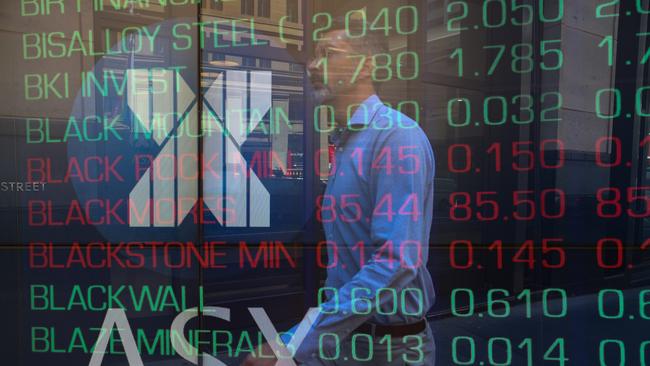
Resilience cracking
The biggest surprise right across corporate Australia has been the resilience of Australian consumers, who are still spending in the face of fast rising interest rates, surging inflation and falling house prices. However, with expectations the official cash rate will push closer to 4 per cent, they can only take so much. Households are still spending but most are chasing value.
Retailers from JB Hi-Fi to Nick Scali were among the first to say that customers were starting to pull back, particularly around expensive household items. JB Hi-Fi’s sales growth slowed sharply in January from its average of the past few years and chief executive Terry Smart says consumers had become more “cautious”. Same store sales at JB Hi-Fi’s Good Guys whitegoods chain was flat. Amcor, a packaging company, has noticed “some softness in demand” for some of its products, in recent months particularly for discretionary items.
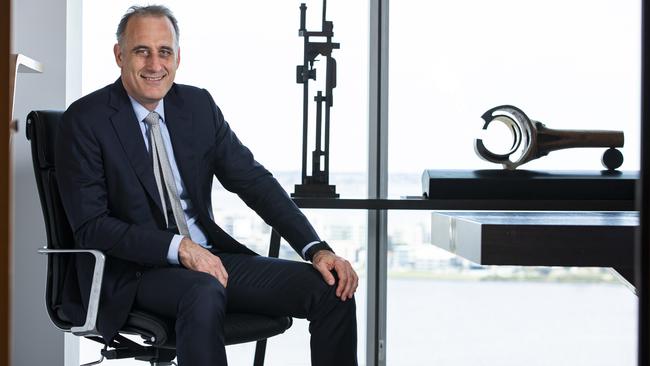
Value retailers such as Wesfarmers’ retailing chain Kmart and Target and even Bunnings continued to thrive. Supermarket operators Coles and Woolworths are seeing a distinct shift as customers move toward private label goods, jumping on discounts and away from more expensive red meats and moving to lower cost protein such as chicken.
Wesfarmers chief executive Rob Scott expects the next six months to be challenging for consumers because of the likely continued increases in interest rates and then some mortgage stress issues will become apparent. Low unemployment remains the key to confidence.
“We have a cautious view around the outlook but think that our businesses are well positioned to support households through that challenge as they become more value conscious,” Scott says.
Predictability wins
Putting more distance between the pandemic years was one of the biggest drivers of cost savings, company bosses say. This allows companies to improve their operating rhythm, which is a big step to becoming more efficient. The return to a normal pre-Covid environment will become even more noticeable in the coming months, particularly as global supply chains start running more smoothly. For Woolworths chief Brad Banducci he says a less volatile operating environment is the big invisible force helping the earnings line. “Food retailers need predictability, they’re used to sending thousands of products to stores on a daily basis. We can just forecast better because shopping has become more predictable again,” Banducci says. This too means there are productivity gains when a Coles or Woolworths truck leaves the distribution centres full, store shelves are filled more efficiently and there is a need to hold less inventory in warehouses.
Qantas chief Alan Joyce says he continues to operate the airline with an “extra buffer”, which means keeping more spare aircraft in reserve and rostering more crew while things are still bumpy in aviation. This will come at an additional cost of $200m this financial year but is expected to quickly unwind in coming months. So too are lower levels of Qantas staff struck down by Covid-19. Qantas has managed to lead on-time performance in Australia for the past few months allowing it to plan better. Others including construction materials major Boral, which has been hampered by massive flooding the last two summers, were able to deliver more reliable results.
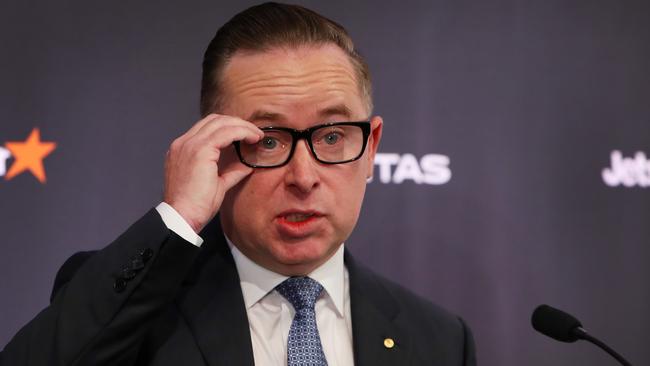
Rio Tinto chief executive Jakob Stausholm too, has been trying to build more reliability into his iron ore operations in the Pilbara. Being stable is the first step to becoming a more efficient producer. Even hospital operator Ramsay Healthcare saw a recovery in surgical admissions coming out of the pandemic years. This was supported by reduced Covid-19 impacts such as staff absenteeism and patient or doctor cancellations, all helping it to lower costs.
Passing inflation
After a surge in the December quarter, companies are now seeing their key input prices starting to stabilise — and in some cases pull back. JB Hi-Fi says key electronic goods have stabilised and Woolworths Brad Banducci points out six months ago every supplier was asking for a price increase where now it has mostly stabilised. Amcor chief executive Ron Delia, who has passed on more than $US1.8bn ($2.7bn) of costs over the past 18 months, says he is cautiously optimistic he has hit the “peak of inflation” particularly in North America. But companies are now facing the second wave: wage inflation. Labour costs are starting to bite particularly for mining companies.
BHP chief executive Mike Henry says the miner was still grappling with worker shortages, particularly in Australia.
“The nature of these inflationary pressures is that there is a lag so just like there was a lag on the way up, there’ll be a bit of a lag on the way down. Just because the pressure is easing it won’t immediately flow through to the bottom line. But trend-wise, we are seeing an easing up on a number of fronts,” Henry says.
Wesfarmers boss Rob Scott says while international-related factors were easing, inflation pressures were now being driven by domestic factors.
“And the biggest challenges facing Australian businesses, are the costs of doing business in Australia. So that goes to not just the cost of labour, but availability of labour, higher energy and power prices,” Scott says.
Steelmaker BlueScope saw more than $400m worth of cost rises through the December half. Brokerage Macquarie Equities noted that companies “appear to be doing better at pushing through price increases” which in general is shown by the positive surprise on sales. That said, inflation continues to pressure margins.
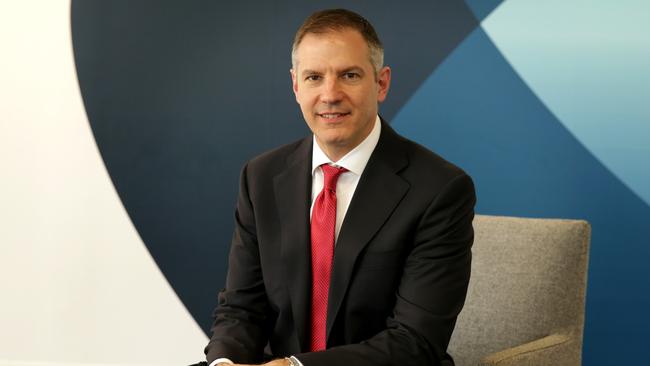
One of the biggest sharemarket casualties in failing to get inflation right was Domino’s Pizza which had $1.5bn wiped from its shares after it admitted a slowdown in sales as customers turned off given price rises. Boral chief Vik Bansal says managing inflation through pricing is critical, particularly for industrial companies. “At the end of the day, somebody has to pay for inflation. The shareholders pay, or the customer. And what we are trying to do is no different to any other company, taking that inflationary pressure back to the market”.
Peak profit?
While Australia is on track for a soft landing, or likely to miss a recession it will still be felt from slowing consumer spending and employment. From big miners BHP to Rio Tinto the commodity cycle has started to turn and this is already playing out with top-line profits falling. BHP’s December half underlying profit was down 32 per cent, while Rio’s full-year profit was off 41 per cent. Both companies slashed dividends. Brokerage Barrenjoey tracked the ASX 300 and calculated earnings results of companies beat the market estimates 38 per cent of time, while 35 per cent came in below expectations.
Critically following results presentation, the market upgraded earnings outlook for 18 per cent of companies, but 32 per cent of outlooks were downgraded: the highest level in six years. While the outlook remains stable, it shows some pessimism is moving into the market. And from companies across most sectors, the flow of CEO guidance comments is becoming more cautious than previous reporting seasons, with interest rates and cost pressures the highlight.
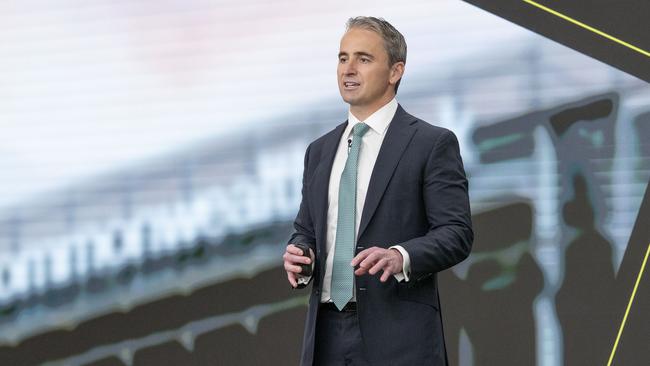
Pressure is starting to emerge on cashflows while spending on capex is being trimmed back. Other factors remain at play for profitability. Qantas chief Alan Joyce cautioned ticket prices were likely to pull back as more capacity comes back into the aviation market.
Earnings too appeared to have peaked for banks as they face a slowing mortgage market. Commonwealth Bank chief executive Matt Comyn says there are a number of risks more broadly for the Australian economy as interest rates move closer to 4 per cent. This is expected to start to see some mortgage stress and ongoing softness in house prices.
“For many of our customers, about a third of Australian households have a home loan with fixed rate maturities and will experience later this year an increase in their repayments,” Comyn says. While the risks were entirely manageable “we also recognise it’s going to be a challenging time,” he says.
CEO transition
There were more CEO exits than are usually announced through the February reporting season, with September through to November usually the peak time for executive departures. Transurban boss Scott Charlton got the ball rolling, flagging his retirement from the toll road operator after almost 11 years. Charlton gave plenty of lead time, saying he plans to exit by the end of December. Despite strong internal candidates the toll road operator hasn’t yet named a replacement. Charlton says one of his big achievements was to make Transurban a “valuable partner” again – to road users, governments, cities and super fund partners — which in turn drives value for investors.
Coles chief executive Steven Cain flagged his retirement by May after steering the supermarket to an ASX listing in 2018 and then through the Covid pandemic. Coles named long-term internal executive and former commercial boss Leah Weckert, who becomes the fifth female CEO of an ASX top 20. Meanwhile Telstra chief executive Vicki Brady delivered her first set of financial results after the former chief financial officer took charge in September. Brady’s promotion highlights the benefits of a smooth internal succession. Investors are comfortable with the Telstra strategy including an ongoing cost cutting program. Other retirements include GPT chief executive Bob Johnston, who plans to stand down by May after more than seven years at the real estate investment trust. An executive search has been launched by GPT’s board. Legal funder Omni Bridgeway saw Andrew Saker flag his exit by October with internal executive Raymond van Hulst to take over. Other CEO exits include Latitude and Reject Shop. Meanwhile Qantas’ Joyce is in his thirteenth year, prompting talk about his retirement. After rebuilding the airline through Covid, Joyce said he intends to stay on until at least the end of this calendar year. Joyce has privately said he still has a lot of energy for the job.








Four weeks of back-to-back profit results has given us the most up to date view of the health of the economy. With tens of billions of profits, nearly the entire ASX 200 has released its accounts. Through dozens of interviews and presentations this is what we learned from corporate Australia as it navigates inflation and interest rate rises.